




| Philodromus of the rufus group (Philodromus rufus-albidus (Walckenaer, 1826 - Kulczynski, 1911)) |





|
|
Scientific name: Philodromus rufus-albidus (Walckenaer, 1826 - Kulczynski, 1911) Common name: Philodromus of the rufus group French name: Philodromus du groupe rufus Order: Araneae Family: Philodromidae Size: 3 to 7 mm. Biotope: Low growing vegetation, bushes, sunny woodland edges. Web: No web. These spiders are used to sitting in wait for preys, they are able to move very fast and to make sudden jumps. Observation period: All year Geographic area: Philodromus rufus: Holarctic region; Philodromus albidus: Western Europe and Central Europe, missing in Ireland and in Scandinavia. |
The spiders of the Philodromus genus have a flattened and moderately elongated body, and all legs are approximately the same section and the same length. However, the legs of the second pair are slightly longer than the other ones, this is one key to tell apart the members of the Philodromidae family. The two fist pairs of legs are oriented forward. The four anterior eyes are all the same size. The posterior median eyes are very far from each other. Each one is closer to the posterior lateral eye than to the other posterior median eye. This group includes Philodromus rufus and Philodromus albidus. It is not possible to differentiate these species on picture. These a small sized spiders which a globally pale coloured look. The cephalothorax shows two lateral reddish bands. The abdomen is sometimes mottled with red. The legs are whitish with tiny black dots. |
| [To know more about the Philodromus of the rufus group] [Next picture] [Top] |
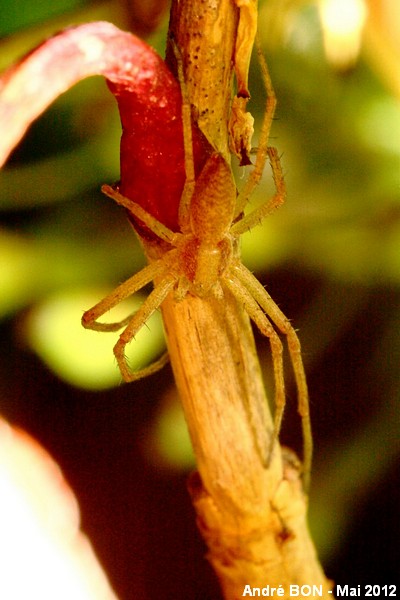
|
I have photographed this spider among the low growing vegetation in the garden. I have no doubt about the Philodromus genus, however the rufus-albidus group needs a confirmation by an expert. |
| [To know more about the Philodromus of the rufus group] [Next picture] [Previous picture] [Top] |
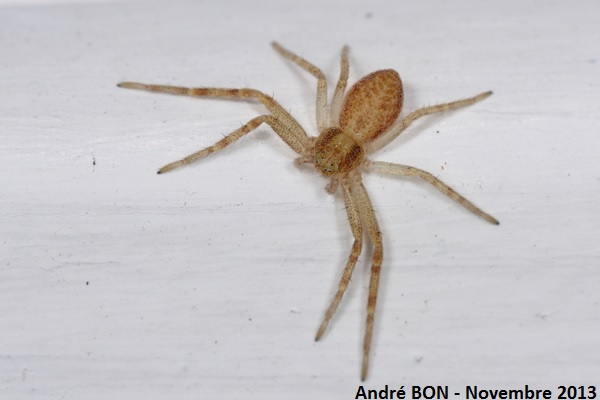
|
I have observed this small spider near a window where she may have come to shelter during the first cold nights. I have been bale to measure its size rather precisely by using a sheet of graph paper. It measures 3.2 mm from the front of the cephalothorax to the tip of the abdomen. The markings on the cephalothorax and the pale legs made me classify it in the rufus group. I wonder whether the dense punctuation of the fore legs may contradict this choice. |
| [To know more about the Philodromus of the rufus group] [Next picture] [Previous picture] [Top] |
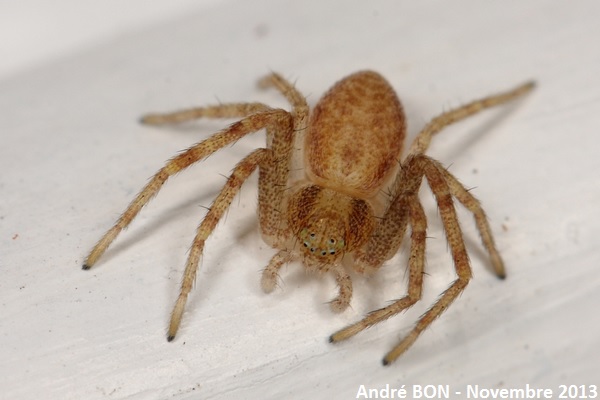
|
This closer view shows the typical eye pattern of the Philodromidae family. |
| [To know more about the Philodromus of the rufus group] [Next picture] [Previous picture] [Top] |
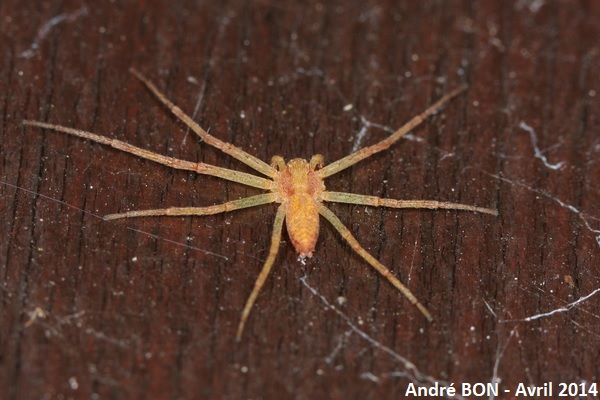
|
Here is a specimen which has lost its right leg II. |
| [To know more about the Philodromus of the rufus group] [Previous picture] [Top] |
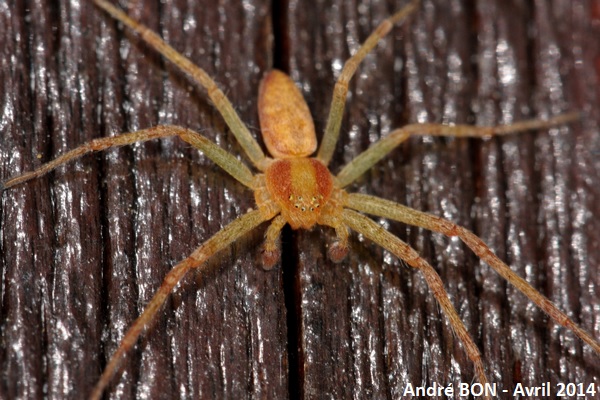
|
The pedipalps indicate one male. |